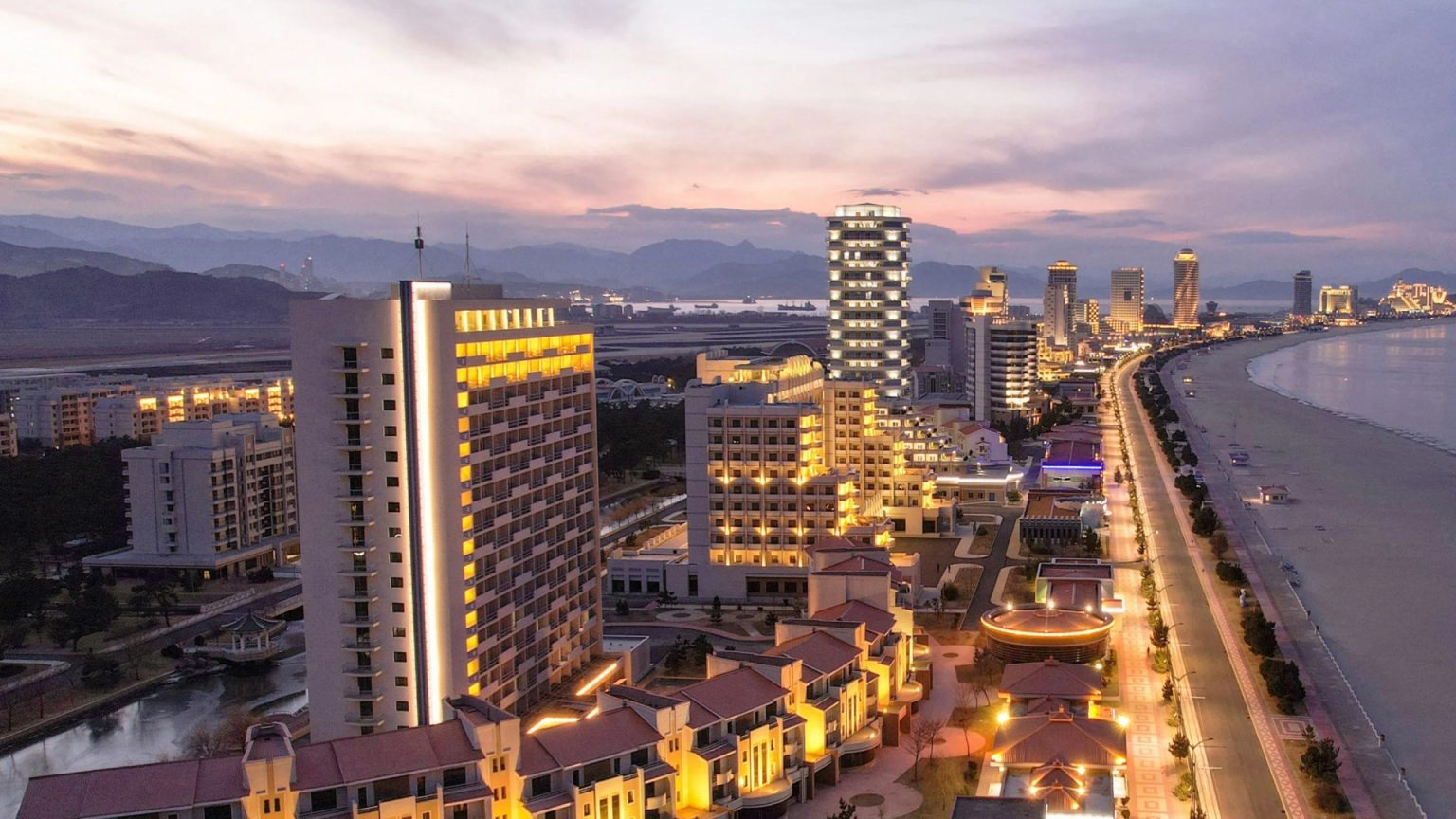Kim Jong-un’s ambitious dream of transforming North Korea into a tourist haven with a sprawling beach resort reminiscent of Spain’s Costa Blanca has encountered another setback. The grand opening of the Galma Coastal Tourist Zone, located on the eastern coast at the site of a former missile launch site, has been pushed back yet again, now slated for June 2025. Originally envisioned to debut this summer, the project has been plagued by delays, mirroring the challenges faced by many of Kim’s ambitious undertakings. The recent visit by Kim and his daughter, Ju-ae, to the site, complete with photo opportunities of the leader inspecting the facilities and enjoying a moment of relaxation in a hotel room, was intended to project an image of progress and imminent completion. However, the revised timeline suggests underlying difficulties continue to hamper the project.
The resort, a massive undertaking comprising over 150 buildings, aims to be one of the world’s largest single-operator beach resorts, with a projected capacity of 100,000 visitors. This ambitious scale contrasts sharply with North Korea’s current tourism reality, which, even before the global pandemic, attracted a mere 200,000 foreign visitors annually. Kim’s inspiration for the project stemmed from a 2017 research trip to Spain’s Costa Blanca, which reportedly left officials “amazed.” He subsequently ordered the construction of the resort, envisioning a bustling 4km stretch of beach filled with happy vacationers. While state media portrays a picture of a “joyous” dictator pleased with the progress, the repeated delays raise questions about the project’s feasibility and its ultimate success.
The Covid-19 pandemic significantly disrupted the resort’s development, forcing North Korea into stringent lockdowns and closing its borders. These measures hampered the flow of funding and materials, crucial for the construction’s advancement. Although construction activities have resumed, attracting potential tourists remains a significant hurdle. The perception of North Korea as a dangerous destination, coupled with the detention of several tourists in the past, casts a long shadow over its tourism prospects. The United States even bans its citizens from traveling to the country without special permission, further limiting the potential visitor pool.
The UK Foreign Office advises against all but essential travel to North Korea, citing the unpredictable security situation and the potential for sudden actions by the authorities. The ongoing tensions stemming from North Korea’s nuclear and missile tests further exacerbate these concerns, making it a risky proposition for potential tourists. These factors present a significant challenge to Kim’s vision of attracting large numbers of international visitors, particularly from Western countries. Even if the resort is completed as planned, the prevailing political climate and security concerns may deter many from venturing to this isolated nation.
The repeated delays in the resort’s opening highlight the disconnect between Kim’s aspirations and the realities facing North Korea. While the project showcases the regime’s desire to project a modern and prosperous image, the underlying challenges of attracting tourists to a country with a questionable human rights record, a tense political climate, and stringent travel restrictions remain substantial. The grand ambitions of creating a bustling tourist destination may ultimately clash with the deep-rooted perceptions of North Korea as an isolated and unpredictable nation. The success of the Galma Coastal Tourist Zone will hinge not only on its completion but also on North Korea’s ability to address these fundamental concerns and convince the world that it is indeed a safe and welcoming destination.
Whether Kim Jong-un’s Benidorm-style beach resort will ever truly flourish remains to be seen. The project faces an uphill battle, requiring a significant shift in global perceptions of North Korea and a demonstrable commitment to ensuring the safety and well-being of visitors. For now, the dream of a North Korean Riviera remains just that – a distant dream, overshadowed by the complex realities of the country’s political landscape and international standing. The June 2025 opening date may well be another optimistic projection, subject to the unpredictable currents that govern North Korea’s interactions with the rest of the world.




